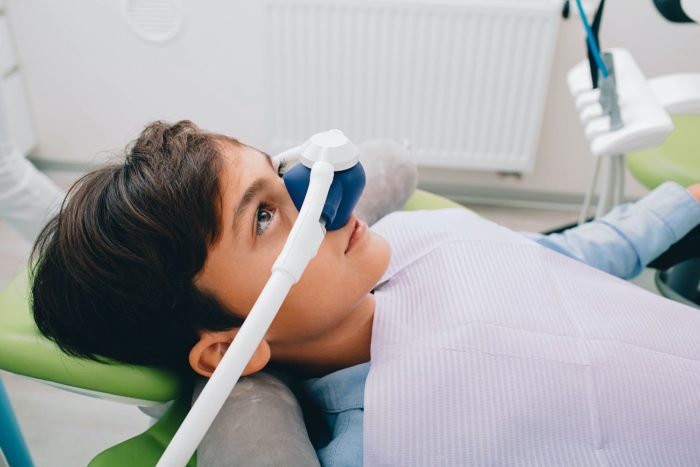About a quarter of all dental patients, young and old, feel nervous about going to the dentist. This feeling often stems from the anticipation of pain. But modern dentists prioritize positive patient experiences, so you can feel confident that your dentist will work to minimize any discomfort during dental work.
Your dentist can offer several types of dental sedation or anesthesia, depending on your treatment and your preferences. Consult with your dentist to find to most effective and appropriate medication to help you feel at ease in your dentist’s chair. Read on to learn more about the different sedation dentistry options your dentist offers and how they compared to anesthesia.

Local Anesthetics
A local anesthetic is a common tool used during dental work. This medicine will temporarily block targeted nerves from sending pain signals to the brain. It has the effect of numbing the area so that the patient will remain comfortable and not feel pain during dental procedures like fillings.
Then a dentist can drill or etch into the teeth as needed without hurting the dental patient. The dentist will first apply a topical anesthetic, a numbing gel, at the injection site for even further comfort. Then they give the local anesthetic using a needle injection into the nerve.
The numbing feeling will set in within minutes. It can last for a few hours but will wear off on its own.
Sedation Dentistry Options
Your dentist offers medication designed to induce a feeling of calmness in the dental chair. These treatment options are known as dental sedation and can help patients who feel severe dental anxiety get the oral health care that they need.
The dentist can offer two types of sedation depending on the patient’s unique needs. Nitrous oxide, also known as laughing gas, is breathed by a patient before their dental work.
It creates a relaxing feeling that allows the patient to remain alert during their treatment. The effects of this medicine wear off once the patient no longer breathes in this gas.
The dentist may also give their patient oral sedation, which involves taking a tablet before their visit. This pill induces a deeper state of relaxation, and the patient will require someone to drive them to and from the office.
General Anesthesia
General anesthesia refers to the IV medication that an oral surgeon may use to induce unconsciousness in a patient. Dentists reserve this type of treatment for more invasive procedures often done by a specialist.
For most dental work, including tooth extractions, local anesthetics and dental sedation will be enough for a patient to remain at ease and comfortable. Your dentist can explain how these treatments work to keep you feeling calm.
Consult with your dentist to learn which type of sedation will best suit your needs before your next dental procedure. Whether you feel nervous or have a physical reaction, like gagging, to dental work, sedation can help.
